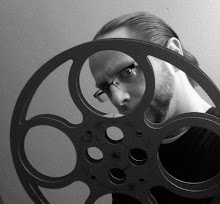Starting in 2004, writer and director Adam McKay made a name for himself as a filmmaker with a knack for generating laughs; with comedy hits such as ANCHORMAN (2004), and STEP BROTHERS (2008). In 2015 he moved over into satirical drama with a look at the insanity of the financial system in THE BIG SHORT, and followed that up with the stranger-than-fiction story of former VP Dick Cheney in VICE (2018). This year, he takes current outrageous events and places them in the sci-fi drama, DON’T LOOK UP.
Two astronomers; Dr. Mindy (Leonardo DiCaprio), and Kate (Jennifer Lawrence), discover a comet that is headed directly to Earth with the power to wipe out the planet. After consulting with the head of NASA’s Planetary Defense Coordination Office (Rob Morgan), they head to the White House to let the world know the planet has six months to live.
Written and directed by McKay, DON’T LOOK UP is a sharp harpoon into the thinking of parts of America over the last two years. Once Mindy and Kate get to the White House, they are shocked to find out that the President (Meryl Streep), and her Chief of Staff (Jonah Hill), are not taking the threat seriously and look at the issue as a PR problem headed into the mid-term elections. This prompts our astronomers to embark on a media tour, where they find that a social-media crazy world is not so quick to get on board the pending apocalypse, with many not believing in the science behind the threat and eventually causing lines in the sand in all of society.
A planet-killing asteroid has been done many times in sci-fi to varying degrees of success, but most of them took it seriously. McKay takes a story that should be considered serious but turns it into satire…simply because it hits close to home. The way the media and head of government treats the pending doom is ridiculous to the point of laughable, but scary in that it’s probably close to the real-world truth. McKay takes no prisoners in harpooning it all; from social media influencers, to right-wing talk show hosts, to brainless TV personalities.
McKay films a great-looking movie, keeps the pacing tight and the laughs well-timed. His editing and presentation of facts are clever; he has no problem with stopping the film cold (literally), to explain a thing or two.
Acting is excellent all-around. Leonardo DiCaprio and Jennifer Lawrence work very well together. Meryl Streep is magnificent, even though we want to punch her character in the mouth. Jonah Hill plays a dick very well, and Rob Morgan is also very good. The rest of the ensemble cast is stellar; Cate Blanchett, Mark Rylance, Tyler Perry, Timothee Chalamet, Ron Perlman, Ariana Grande, and Himesh Patel.
DON’T LOOK UP is an excellent film without a flaw to it, but it would be difficult for audiences to not look at it through today’s optics. The film is an obvious commentary on COVID and the division between science-deniers and actual educated scientists…and the former group would likely take issue with the film. And then again, those out there who would rather forget the last two years would prefer not to be reminded about the state of America. But if one of the many purposes of cinema is to earn outrage, then by all means, look up to this film.
BOTTOM LINE: See it

















